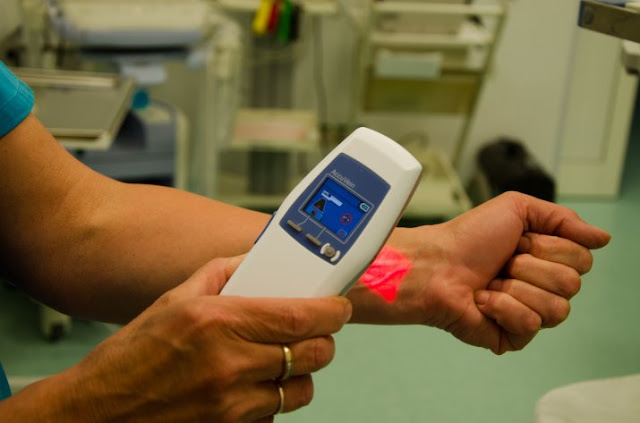Vein Finder Is an Advanced Medical Device, Which Is Used to Search out Vein Networks beneath the Skin Layers
Vein
finders are used all over the world, especially in regions such as the United
States, Singapore, and Italy. A near-infrared vein finder is a device that
shows the location and color of veins with high accuracy. The technology uses
certain wavelengths of DLP(c) projection to detect the location and color of
the vein. This makes it safe and reliable and helps avoid cross-contamination
issues. Another advantage of the near-infrared vein finder: it is portable and
comes with various detection modes.
According
to Coherent Market Insights the Vein
Finder Market Size, Share, Outlook, and Opportunity Analysis, 2022-2028.
The
basic prototype of a vein finder is composed of a high-power NIR-LED light
source, a compact infrared-sensitive camera, and a filter. The researchers
added some parts for enhancement purposes, such as a Digital Light Processing
(DLP) projector, which allows the image of the vein to be projected onto the
surface of the skin. Although the device is very compact and accurate, this
type of scanner is more expensive than other options.
There
are many advantages of near-infrared vein finders, but there are also many
drawbacks. In addition to high costs, they can be difficult to use. Even if
users are an expert at using a vein finder, it is still important to understand
the science behind the technology. A Near-infrared vein finder can save the
life by helping to diagnose the condition. In regions such as the United
States, the increasing prevalence of hospitals has increased the usage of vein
finders. For instance, according to American Hospital Association, currently,
there are around 6090 hospitals in the U.S.
One
of the main advantages of a Near-IR vein finder is the cost. Depending on the
budget, this tool is relatively inexpensive and portable. Its low price and
portability make it useful for medical practitioners and students for
cannulation training. A reflectance-type optical vein finder employs three LED
lights and an infrared sensor camera. The images are processed with open-source
image processing software. Near-infrared vein finder's light is absorbed by
human tissue, making it difficult to see veins with a traditional flashlight. A
near-infrared vein finder uses the same method but differs in the types of
light it uses. For instance, a transillumination device uses a red laser to
identify the veins. Then, the device focuses on the blood in a particular area
of the body.




Comments
Post a Comment